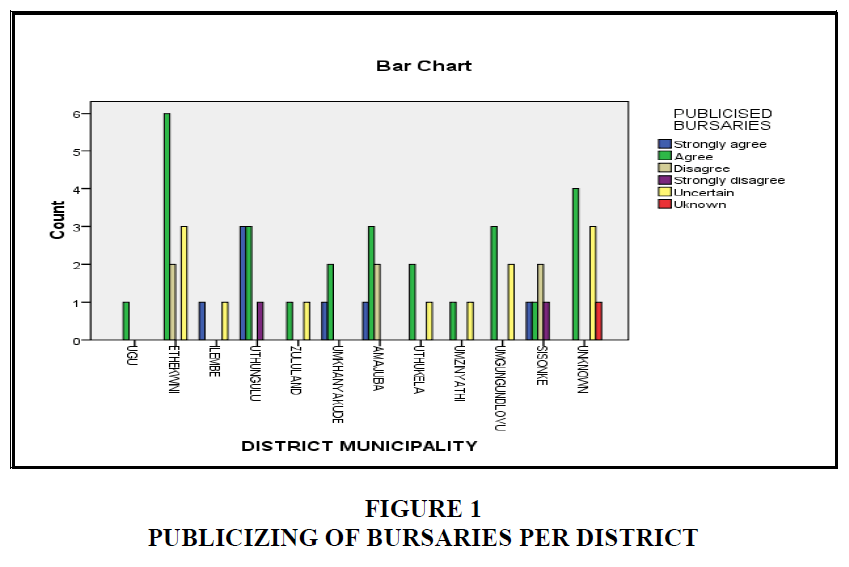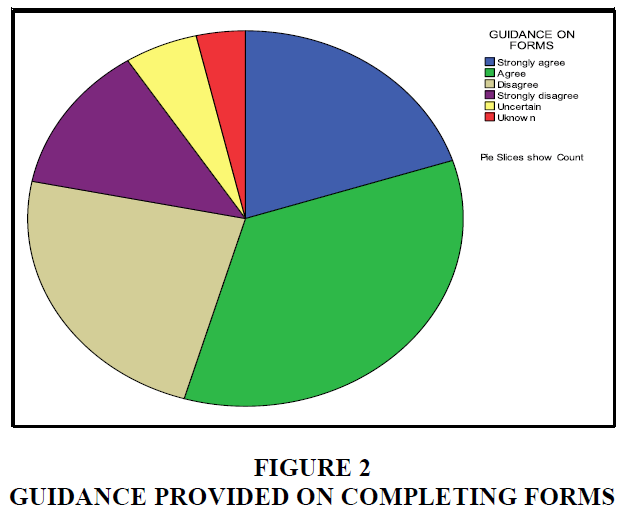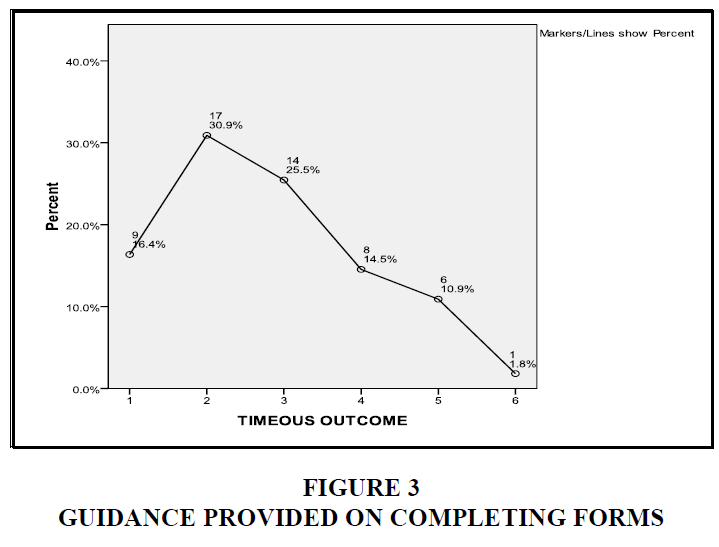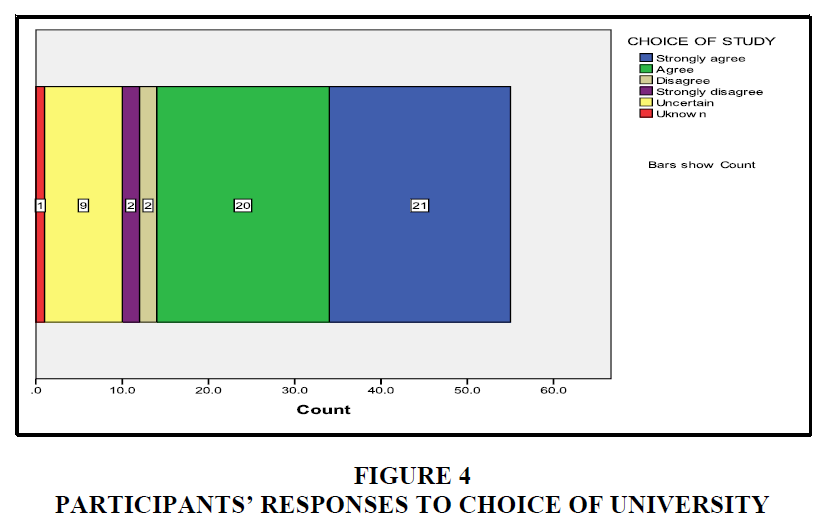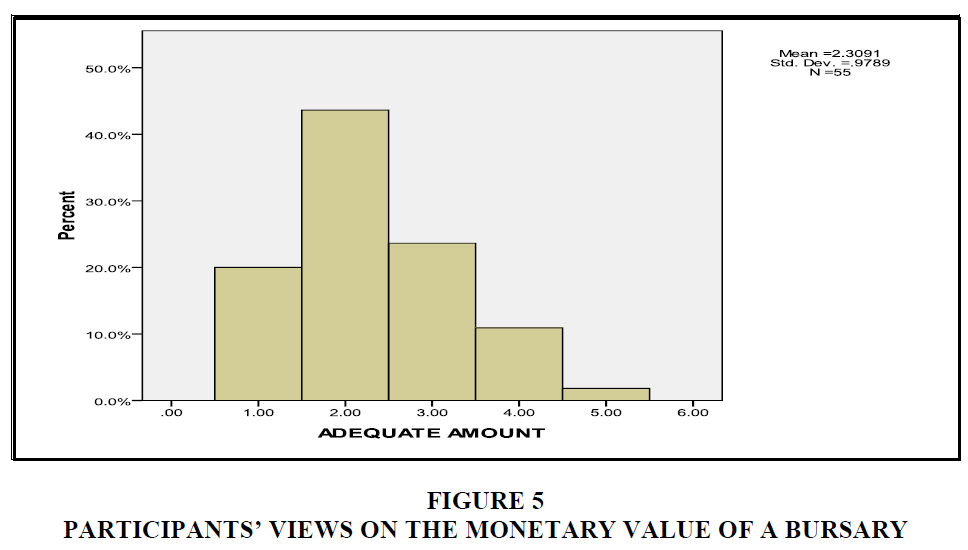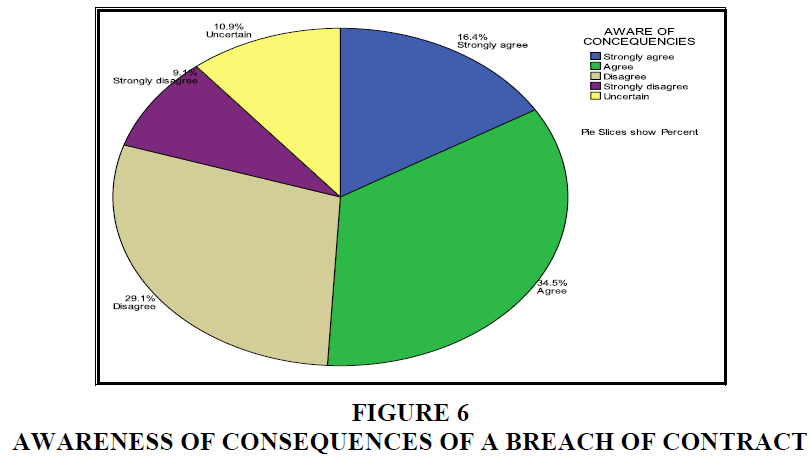Research Article: 2022 Vol: 25 Issue: 1
Addressing Shortages Of Doctors Through Department Of Health Bursaries: A Case Of A Selected University In The Kwaulu Natal Province, South Africa
Bongani Innocent Dlamini, Durban University of Technology, South Africa
Luther-King Junior Zogli, Durban University of Technology, South Africa
Mthembeni Mthethwa, Department of Health (KZN), South Africa
Citation Information: Dlamini, B.I., Zogli, L.K.J., Mthethwa, M. (2021). Addressing shortages of doctors through department of health bursaries: A case of a selected university in the Kwaulu natal province, South Africa. Journal of Entrepreneurship Education, 25(1), 1-12.
Abstract
In an attempt to address scarcity of medical practitioners in South Africa, the Province of KwaZulu Natal’s Department of Health put in place a strategy to award bursaries to medical students in order to intensify the recruitment and retention of medical practitioners. Students who go through this programme will then have a service obligation to the department. The current study therefore sets out to find out the extent to which the process of awarding bursaries to medical students influences students’ loyalty to the department upon completion, other than the legal obligation which is enforced through a contractual agreement. This study adopted quantitative research design. The findings revealed that that majority of the participants are satisfied with guidance providing when completing bursary forms, response to application, being able to go to their university of choice and the monetary value of the bursary. However, it was noted that the bursary information is not well publicised in some districts. Furthermore, some students did not understand the bursary contract as well as were unaware of the consequences of breach of contract. Finally, most participants alluded to the fact that they are not provided the opportunity to give feedback about their experience of the bursary programme.
Keywords
Bursary, Prospective Employee, Scarce Skills, Breach of Contract, Loyalty
JEL Classifications
JEL M10.
Introduction
The Republic of South Africa is a developing country characterized by shortages of skills in various sectors of its economy. The Public Health Sector in particularly, is compromised by serious shortages of medical practitioners to deliver health-care services to the citizens of the country (Van Diemen, 2019). The country’s Department of Labor therefore introduced the National Skills Development Strategy (NSDS) to serve as the terms of reference and guide for all Sector Education and Training Authorities (SETAs) in implementing the sector skills development strategy (Department of Higher Education and Training, 2017). Hence, the Health and Welfare Sector Education and Training Authority (HWSETA) is a statutory body established in March 2000 by the Minister of Labor in terms of the Skills Development Act 97 of 1998. The HWSETA's main role is to bridge the gap in essential skills in Health Care and Social Development. The HWSETA engages various stakeholders in the development of the Sector Skills Plan (SSP) (HWSETA, 2014). The National Department of Health Human Resource Plan further narrows the scope of the SSP into a working document for the Public Health Sector, mainly for the provincial Departments of Health (DOH).
KwaZulu Natal, which one of South Africa’s nine provinces’ DOH has prioritised medical practitioner training in the Provincial Human Resource Plan for Health as a strategic training programme to address the shortage of doctors in the Provincial Health Facilities (KZN Human Resource Council, 2017). The programme sets aside funds for students to study towards the Bachelor of Medicine and Bachelor of Surgery (MBCHB) degree at a university of their choice within the Republic who then become prospective employees of the DOH. Students are subjected to a recruitment and selection process which includes signing a contractual agreement to work for the DOH upon completion of their qualifications. As a contractual obligation, it is expected of bursary- holders to render their service in a Public health institution/hospital in the KZN Province for a period equivalent to the length of study as specified in the bursary contract.
There are a number of organizations awarding bursaries to students as Cottrell, (2007) pointed out that students usually do not have the financial means to fund their education. This case is more serious for medical students as undergraduate medical courses are longer than most other university courses. In addition to the longer course length in years, they are often extended for clinical years in the form of compulsory internship and community service; consequently medical students face a long student’s life and have little spare time to obtain additional income. Maile (2008) argues that students leave before completing their degrees because they cannot afford to stay. Furthermore, impoverished families are called upon to top up their loans and bursary funding.
Many students leave to find work with the intention of returning when funds have been raised. The awarding of bursaries to medical students is therefore a form of assistance for students during the entire period of study.
Bursaries are advertised, students apply and the selection is means-tested. Cottrell, (2007) points out that some students entering their fifth year of study in 2005/2006 encountered huge delays in obtaining money from the National Health Service in the United Kingdom (NHS UK). Actions like these may result in disloyalty on the part of the bursary holders when they have to serve back time. Cottrell, (2007) further states that the financial position of students is assessed by a means-test threshold of joint household income for parents/partner. Therefore, a student being awarded a bursary is dependent on the student meeting the qualifying criteria.
Problem Statement
Statistics contained in the DOH database reveal that not all bursary-holders honor their contractual obligation upon completion of their qualification. Consequently the department battles to retain some of those whom they have assisted in obtaining a MBCHB degree.
Students benefit from the full bursary award which covers tuition fees, meals, accommodation and a book allowance. In some instances, miscellaneous expenditure associated with the study requirements of the student is paid to the university in the form of sundry payments. Moreover, the students enjoy the benefits during the duration of their study and after completion of the qualification. The department on the other hand benefits from the pool of medical practitioners who have completed their studies and are then placed in Health Facilities to complete their service obligations. The benefits to the Department are realized after the student has completed the qualification and is serving the obligation in terms of the contract. In the event of a breach of contract, the student pays back the full bursary amount plus interest. The latter is however not the intention of the DOH in light of prevailing shortages of doctors. According to Swanenberg (2005), rich and poor countries experience the scarcity of skilled and experienced medical professionals. The hospitals are always crowded. The training of medical students takes a few years. When the medical professionals gain experience, they leave the public service to offer private medical services and charge very high prices.
Objective of the Study
To determine whether the current process of awarding bursaries contributes to the bursary-holders’ satisfaction and loyalty to the DOH.
Literature Review
It is estimated that South Africa will need to produce an average of 2,010 doctors annually to be able to support the healthcare system (SSP Update, 2008). According to Stevens (2007), the recruitment and retention of an adequate, motivated, competent health workforce has become a major concern in sub-Saharan Africa, particularly in rural and underserved areas. Inadequate resources, poor working conditions and low salaries have resulted in widespread health worker dissatisfaction, with associated migration to the private sector, developed national health systems, or alternative professions. Stevens (2007); Hammer & Jack, (2002); Martinez & Martineau (2002); Beaglehole & Dal Poz (2003); Hongoro & McPake (2004); Narasimhan (2004) & Wyss (2004), postulates that, a substantial body of literature has emerged on how to produce and strengthen human resources for health detailing a range of strategies that have been employed by different health ministries. These strategies use a conceptual framework that views migration as the product of a balance of contributing factors – thus the onus is on developing countries to address socio- economic issues by providing financial or non-financial incentives, or improving working conditions or career opportunities, and on developed countries to limit pull factors by avoiding aggressive recruiting in developing countries, and producing their own medical personnel in adequate numbers (Stevens, 2007).
A study conducted by De Villiers shows that the education and training of generalist practitioners for rural practice needs specific attention. De Villiers argues that, firstly, the unique nature of rural practice makes it necessary for doctors to undergo relevant and focused instruction. Rural family practice requires that doctors have the knowledge and skills to practice in settings where high technology and specialist resources are not available, while at the same time requiring them to be able to perform a wide range of advanced functions and procedures. Secondly, it is argued that appropriate education and training for rural practice can positively influence the recruitment and retention of medical practitioners in rural areas. The teaching of the knowledge and skills required for rural practice should take place in an appropriate setting that promotes interest in rural practice and familiarizes the student with its particular challenges. There is a paucity of data in South Africa on medical practitioners staffing district hospitals, especially in terms of their knowledge and skills levels. Such information is critical if rural hospitals are to deliver equitable and quality health services as well as for guiding appropriate undergraduate, postgraduate and continuing professional education for rural practice.
The bursary policy does not inform the bursary-holders about the strategies in place for the University of KwaZulu-Natal or which learning areas bursary-holders should be exposed to in order to cope with the challenges to be faced when placed in rural areas. Will this contribute to his or her breach of contractual service obligation when a bursary holder is placed in rural areas upon completion? Research conducted by Peters & Steward (1996) suggests that location factors in physician’s judgement of their practice location are determined with intention. Six selected factors (income, family, workload, continuing medical education, leisure and medical colleagues) were used as orthogonal cues for a judgment analysis survey. Income was highest for urban- and suburban-intending residents, and family was strongest for rural-intending residents. Workload weights were comparable for all physicians.
A study conducted by Dhaniram (2003) has shown that Community Service doctors in KwaZulu-Natal experienced significantly high burnout levels. The bursary-holders, who have a legal obligation to serve back in high-stress level working conditions/location, are not immune to brain drain and burnout. According to Dhaniram (2003) and Van Zyl & Bester (2002) elevated stress levels within South African organizations often occur as a result of scarcity of high-level human resources, managers and professionals who are under great pressure. As well as the skills shortage that has created exceptional pressure on technicians and skilled workers. An increase in the number of doctors produced through the bursary award strategy will address the shortage of doctors, reduce the number of breaches in service obligation and enhance loyalty to the Department of Health in KwaZulu-Natal (DOH).
Methodology
This study adopted a quantitative research design. Quantitative research is a method aimed at collecting numerical data from a selected group of participants, and then generalizes those results to a larger group of people in order to explain a phenomenon (Creswell (2002). Cross-sectional data primary data was collected. Cross-sectional data is data gathered from different respondents at one point in time (Matthews and Ross, 2010; South Africa Department of Health, 2006; South Africa KwaZulu-Natal: Department of Health, 2006).
The population in this exploration consisted of all the 55 students in the Health Science faculty at the University of KwaZulu-Natal’s (UKZN) Nelson Mandela School of Medicine who were subjected to the DOH process of awarding bursaries as a strategy to address scarce skills in 2019. These students from the first year to the fourth year. Everyone in the population was interviewed.
Data Gathering Instrument
A structured questionnaire was used based on Customer satisfaction survey techniques in order to students’ satisfaction with the bursary awarding. A comprehensive understanding of the way in which medical students are currently considered and assessed for a bursary is essential in determining the extent to which an element of satisfaction and loyalty starts. The study employed Descriptive analysis using the SPSS statistical software. Results are presented with descriptive statistics, presented in tabular and graphical forms.
Analysis and Discussion
Demographic Profile of Participants
The participants’ demographic profile is represented in the Table below:
In In Table 1, it is shown that all of the bursary-holders were in the age bracket of 17 to 28 years with 64% being females and 36% males. 90% of the participants were Black Africans as shown in the table. The racial and gender distribution seems to be in line with the departmental policy on employment equity and Affirmative Action. One of the objectives of the Department of Health policy on awarding bursaries is to redress imbalances regarding race, gender and people with disabilities inequalities, as well as addressing poverty.
| Table 1 Demographic Profile of Respondents | ||||
| Total Sample | Age Range | Qualification Level Range | Gender Range | Race |
| 55 participants | 17 -28 years | Year 1 to Year 4 | Males – 36% Females– 64% |
Black African – 90% Other – 10% |
Level/year of Study and Employer of Choice
The structure of medical training involves five years of learning before engaging in the internship programme and community service. Table 2 indicates the participants’ choice of work upon completion of their qualifications.
| Table 2 Employer of Choice | |||||||
| Service Obligation | |||||||
| Strongly agree | Agree | Disagree | Strongly Disagree | Uncertain | Total | ||
| Level of Study | 1st year | 1 | 1 | 0 | 0 | 1 | 3 |
| 2nd year | 3 | 5 | 4 | 0 | 3 | 15 | |
| 3rd year | 3 | 3 | 0 | 2 | 3 | 11 | |
| 4th year | 5 | 9 | 3 | 0 | 3 | 20 | |
| Unknown | 4 | 1 | 1 | 0 | 0 | 6 | |
| Total | 16 | 19 | 8 | 2 | 10 | 55 | |
The majority of the participants agreed that they would willingly work for the department even if it had not been for their service obligation. However, a few participants did not choose the department as an employer of choice. The 2nd year level participants who agreed and strongly agreed comprised of 5 and 3 respectively, whilst the 4th year level respondents who agreed and strongly agreed numbered 9 and 5 respectively. The 2nd and the 4th year level participants constituted the majority amongst the participants and their responses reflected the view that they would work for the department. This indicates that they were more satisfied with the department and would tend to be loyal when expected to comply with their obligation.
The Process of Awarding Bursaries by the Department
To test the satisfaction of bursary-holders with the awarding process, the following variables were included in the questions for participants:
1. Publicizing of bursaries,
2. Guidance in applying,
3. Feedback on application,
4. Choice of university,
5. Amount of bursary,
6. The content of the bursary contract,
7. Awareness of consequences of breach of contract and
8. Communication relationship.
The responses from the participants are discussed in the ensuing sections:
Publicising of Bursaries
Based on district of origin, participants were required to indicate if bursary information was publicized using various media platforms. Responses are represented in Figure 1.
With regard to publicizing bursaries, 12% strongly agreed and 49% agreed that the department publicized bursaries in all areas of the province. Attention should however be paid to Sisonke and uThungulu districts, where the respondents strongly disagreed that bursaries were published. George et al., (2019) study in South Africa discovered that there is an urban bias regarding choice of work location for newly graduated doctors. This study therefore recommended that an opportunity should be provided for students from the rural areas to be trained as doctors so that they can go back to serve their communities (South Africa Department of Labour, 2009).
Therefore, publicizing bursaries in rural areas can go a long way to achieving that objective.
Guidance in Applying
The pie chart (Figure 2) below indicates participants’ responses to guidance being provided when they were completing the bursary application form.
There was general agreement that applicants are being assisted when completing the application forms. However, some elements of disagreement are noted in the applicants’ responses.
Feedback on Applications
Figure 3 present’s participants’ responses to being given feedback about the outcome of their bursary application.
Most (30.9%) of the participants agreed that the feedback received was adequate. However, 1.8% did not respond. Therefore, more than half of the respondents agreed that feedback was provided by the Department, which would ultimately improve client satisfaction and, subsequently lead to the retention of young doctors.
Choice of University
A bursary applicant is allowed to study at any university of his or her choice in the Republic. Figure 4 below indicates the participants’ responses to the choices given during their bursary application.
There was an overwhelming agreement that an applicant was allowed to study at a university of his or her choice whereby 20 and 21 participants agreed and strongly agreed respectively that the department allows them to study at a university of their choice.
Monetary Value of Bursary
The amount of money for a bursary was an issue. Maile (2008) argues that medical students face a long student life while they have little spare time to obtain additional income unlike their counterparts in social sciences. The Figure 5 below indicates participants’ views on the monetary value of a bursary.
From the figure above, it appears that 64% (44% and 20%; strongly agreed and agreed respectively) of the total participants agreed that the bursary amount was adequate to cover tuition, meals, accommodation and book allowances. This means that the participants were satisfied with the value of their bursary.
The Content of the Bursary Agreement
The bursary agreement regulates the future employment relationship between the department and the bursary holders. It is critical that both parties understand the content of the agreement since if forms the legal basis for mutual agreement. Table 3 shows participants’ responses to understanding the terms off the contract.
| Table 3 Understanding the Contract | |||
| Count | Percent | ||
| Contract Understood | Strongly agree | 8 | 14.5% |
| Agree | 25 | 45.5% | |
| Disagree | 17 | 30.9% | |
| Strongly disagree | 2 | 3.6% | |
| Uncertain | 3 | 5.5% | |
| Overall | 55 | 100.0% | |
Table 3 presents the responses with regard to the understanding of the content of the bursary contract. 55% (14.5% and 45.5%; strongly agreed and agreed respectively), indicate that the contract was easy to understand. However, about 31% strongly disagreed that the contract was easy to understand. Not understanding the contract is a root cause for the breach of contract.
Awareness of the Consequences of a Breach of Contract
Breaches of contract have consequences. The department does not achieve a 100% retention rate of bursary holders after completion of studies. The pie chart, (Figure 6) indicates the responses to being aware of the consequences of breach of contract.
The study revealed that almost half of the participants, including those who were uncertain were not aware of the consequences of a breach of contract. The department therefore needs to promote awareness of the consequences of a breach of contract. The others (34.5% agreed and 16.4% strongly agreed) that they knew the consequences.
Communication
Communication is critical for any organization to succeed. The bursary strategy is the key strategy for the department to allay shortages of doctors in the Province. Saskatchewan Health Regional Services emphasizes the importance of conducting a bursary recipient survey as a means of feedback and improvement of their bursary programme. The responses of participants when queried about the being granted the opportunity to provide feedback about the bursary programme is presented below in Table 4.
| Table 4 Participants’ Views on Communication Regarding Bursaries | ||||||||
| COMMUNICATION | Total | |||||||
| Strongly Agree | Agree | Disagree | Strongly Disagree | Uncertain | Unknown | |||
| District Municipality | Ugu | 0 | 1 | 0 | 0 | 0 | 0 | 1 |
| Ethekwini | 1 | 2 | 5 | 1 | 2 | 0 | 11 | |
| Ilembe | 0 | 1 | 0 | 1 | 0 | 0 | 2 | |
| Uthungulu | 1 | 2 | 1 | 2 | 1 | 0 | 7 | |
| Zululand | 0 | 1 | 0 | 1 | 0 | 0 | 2 | |
| Umkhanyakude | 0 | 1 | 1 | 0 | 1 | 0 | 3 | |
| Amajuba | 0 | 0 | 6 | 0 | 0 | 0 | 6 | |
| Uthukela | 0 | 3 | 0 | 0 | 0 | 0 | 3 | |
| Umzinyathi | 0 | 1 | 0 | 0 | 1 | 0 | 2 | |
| Umgungundlovu | 1 | 2 | 0 | 2 | 0 | 0 | 5 | |
| Sisonke | 1 | 0 | 2 | 0 | 1 | 1 | 5 | |
| Unknown | 0 | 2 | 2 | 2 | 2 | 0 | 8 | |
| Total | 4 | 16 | 17 | 9 | 8 | 1 | 55 | |
Majority (47%) either disagreed or strongly disagreed that they are given the opportunity to provide feedback on the programme. 36% indicated they are given the opportunity whereas the rest were uncertain.
Recommendations and Conclusion
The current study explored the awarding of bursaries to medical students at UKZN in order to allay the shortage of doctors in KZN’s DOH. It explored issues of student satisfaction with the bursary awarding process to find out if it can lead to breaches of contract or students not willing to honor their contractual service obligations.
The shortage of doctors remains one of the greatest challenges in South Africa affecting the economy to which the government lacks the financial muscle to solve. The South African government in tend imports these scarce skills from countries like Cuba and Tunisia. One of the main ways of dealing with this shortage is increasing the production of doctors by funding those who cannot afford to pay medical school fees.
The National Skills Development Strategy II provides for a concerted effort to be made to develop the skills of the South African workforce. The government’s departmental processes and procedures can pave the way to implementing various training and development programmes to address the scarce skills in the Public Service. As a strategy to allay the shortage of doctors, the issue of bursaries is one which deserves attention.
The results of the current study shows that the medical students interviewed are content with guidance providing when completing bursary forms, response to application, being able to go to their university of choice and the monetary value of the bursary. However, it was noted that the bursary information is not well publicized in some districts. Furthermore, some students did not understand the bursary contract as well as were unaware of the consequences of breach of contract. Finally, most participants alluded to the fact that they are not provided the opportunity to give feedback about their experience of the bursary programme.
Informed by evidence, it is suggested that the DOH consider the following recommendations which will improve the process of awarding bursaries to prospective employees:
• Provide a platform to obtain regular feedback about the awarding of bursaries from the bursary-holders.
• Conducting workshops to clarify the contents of the bursary agreement and the consequences of breach of contract.
• Conducting regular reviews of the bursary policy for prospective employees/students.
References
Cottrell, E. (2007). The Medical Student’s Survival Guide 1: The Early Years (1st Edn). United Kingdom: Radcliffe.
Creswell, J.W. (2002). Research design: Qualitative, quantitative, and mixed method approaches. London: Sage.
Hammer, J., & Jack, W. (2002). Designing incentives for rural health care providers in developing countries. Journal of Development Economics, 69(1), 297-303.
HWSETA (2014). Sector skills plan update for the Health and Welfare Sector in South Africa.
Peters, T. & Steward, T. (1996). Location factors affecting family medicine physician practice setting preferences: application of social judgment theory to rural health policy. M. I. Bassett Research Institute, New York.
South Africa Department of Health. (2006). A National Human Resources for Health Planning Framework. Government Printer, Pretoria.
South Africa Department of Labour. (2009). SETA Support Directorate. National standard to promote good practices in skills development: Implementation Framework. Government Printer, Pretoria.
South Africa KwaZulu-Natal: Department of Health. (2006). Human Resource Plan. Government Printer, Pietermaritzburg.
Stevens, E. (2007). Exit, voice, and loyalty in the South African Public Health Sector: Young doctors’ responses to government human resource policies. M.A. thesis, Oxford University, New College.
Swanenberg, A. (2005). Macroeconomics Demystified: A self-teaching Guide.
Van Diemen, E. (2019). Why SA has a shortage of doctors and nurses.
Van Zyl, E. & Bester, C. (2002). ’n Vergelykende studie na die vlak en oorsake van werkstres by ’n groep geletterde en ongeletterde swart werknemers (A comparative study of the level and causes of occupational stress among groups of skilled and unskilled black employees). South African Journal, 27(3).
